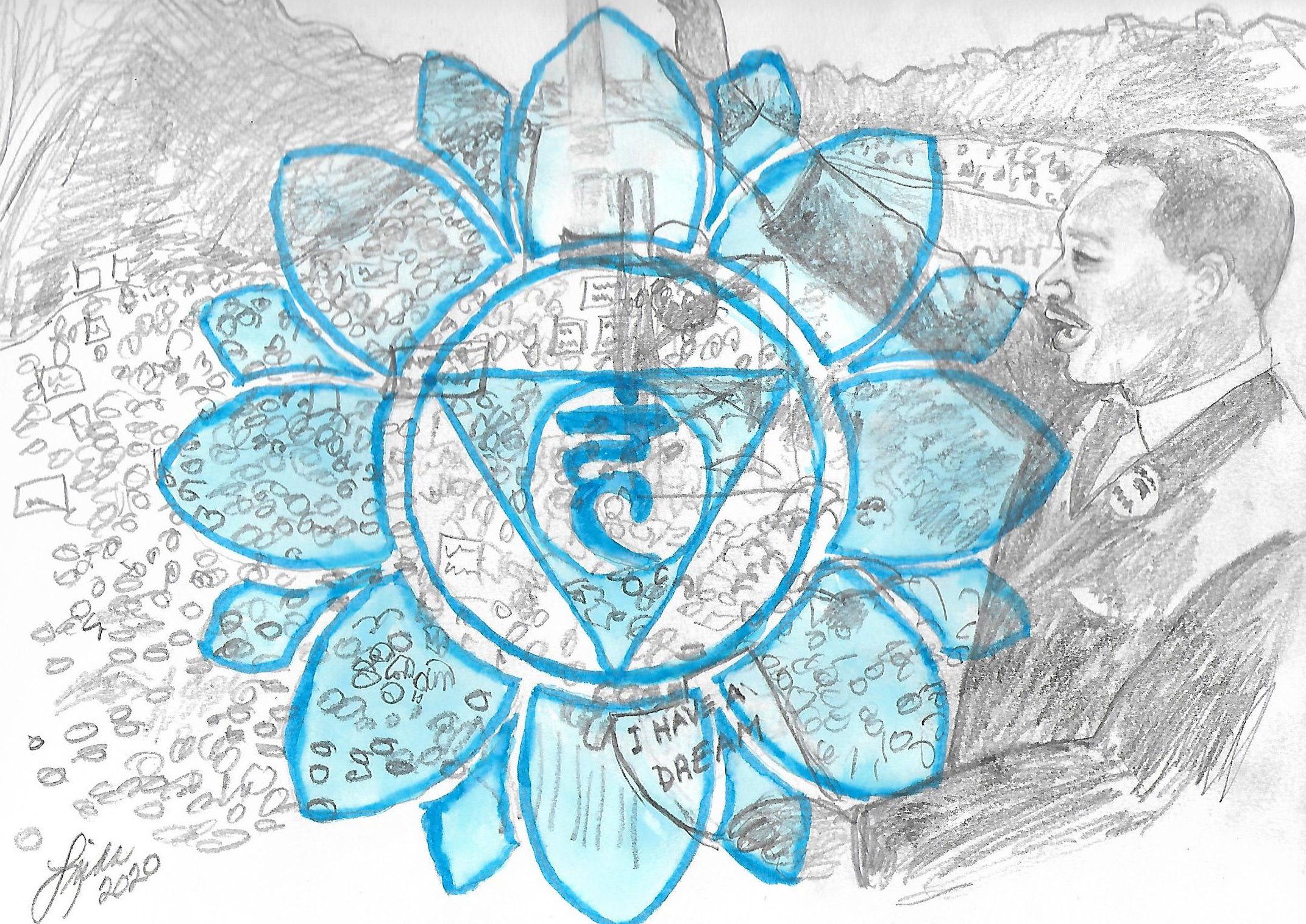The universe is of the nature of a thought or sensation in a universal Mind. To put the conclusion crudely – the stuff of the world is mind-stuff. As is often the way with crude statements, I shall have to explain that by “mind” I do not exactly mean mind and by “stuff” I do not at all mean stuff. Still that is about as near as we can get to the idea in a simple phrase. Sir Arthur Eddington, British Astronomer.
Yogas citta vrtti nerodha.” Translated: Yoga is the calming of the fluctuations of the mind stuff. Second Yoga Sutra of Patanjali
Fifth Dimension Yoga leads us to perceive the universal mind—the source of infinite possibilities that exist, at once, waiting to manifest into our three-dimensional world, over time, upon our observation. But what is the fifth dimension?
Let’s begin to look at the concept of the fifth dimension with the story of “Schroedinger’s Cat.”
Erwin Schroedinger, was an Austrian-Irish, Nobel Prize winning physicist who developed and furthered the field quantum theory. He famously proposed a thought experiment to disprove the idea that observation is the cause of manifestation. In quantum physics terms, manifestation is worded as “a superposition collapsing into one state.”
In Schrodinger’s thought experiment, a cat is placed in a box with a tiny bit of radioactive substance. When the radioactive substance decays, it triggers a Geiger counter, which releases a poison that kills the cat. But since there is no conscious observer present (everything is in a sealed box), the cat remains both dead and alive at the same time—in a superposition—until the box is opened and observed. Once observed, the cat becomes either dead or alive.
Schroedinger proposed that the existence of a cat that is both dead and alive at the same time is absurd and does not happen in the “real” world. He believed that this thought experiment proved that the outcome of events is not driven by observation. However, over time, this thought experiment has been used to demonstrate just the opposite. As long as the box is closed, we cannot know if the cat is dead or alive. It could be either dead or alive, thus remains in a superposition—both states at once—until it is observed.
The cat’s superposition exists in the fifth dimension. The fifth dimension is the dimension in which everything is in a static superposition until it is observed. Let me explain.
We are taught that we live in a three-dimensional universe bound by time. These dimensions are, first, a line, which extended becomes the second, dimension—a plane, when extended becomes the third dimension—a cube, a sphere or some other solid shape. Moving the solid through space, we experience time, considered the fourth dimension.
Our experience of these dimensions goes something like this: you and I agree to meet in the mezzanine lobby of the building at the corner of Fifth and Elm at 3 PM Tuesday. Thus, we have set a space and time to meet. Both of us have to move through three dimensions at a particular time to arrive in a certain space.
Or we may be sitting at the dinner table when you might say to me, “pass the potatoes.” I hand over the solid bowl of potatoes to your place over the course of a few seconds of time.
Modern day physics tells us that the universe has a fifth dimension where everything is static, not moving or changing over time, but remaining in one state. It is said to be invisible because it is a micro-dimension, too small for us to perceive and it is thought to be curled into itself in a spiral. Unlike our familiar three dimensions, bound by time, where entropy, i.e decay, is always increasing, in the fifth dimension, entropy doesn’t exist. In the fifth dimension, everything, every possibility, exists without change until it is perceived and manifested into our three-dimensional reality in a moment in time.
This idea is derived from quantum theory, which goes further to propose the idea that the fifth dimension is always in a state of “quantum superposition.” That is, quantum particles, the building blocks of solids, may be in more than one state of being at the same time and collapse down to a single state upon interaction with other particles. Many physicists believe that quantum particles only collapse to a single state when viewed by a conscious observer, thus melding quantum theory with the teachings of ancient philosophies, such as yoga.
Considering the fifth dimension, its lack of entropy plus its constant state of superposition, we can look at the fifth dimension as a field of possibilities that come to fruition only upon observation. Observation happens at each moment in time. In the fifth dimension, each possibility exists unchanged until it is observed and manifested in our three-dimensional world over tme. Thus, as you are pushing through the leading edge of time, moment by moment, your observation causes each possibility to unfold in three dimensions.
But because most of us have minds that are cluttered by random thoughts, we never realize that our observation is manifesting our world. The chattering nature of our thoughts prevents us from seeing into the fifth dimension. Our minds are filled with ponderings that prattle on about our “to-do list,” our grievances, our fears. These haphazard thoughts are like the ripples on the surface of water that prevent us from seeing through it. When we practice yoga, we calm these ripples and create a clear surface where we can see all possible outcomes in the superposition of the fifth dimension as if they are in “front” of us.
Practicing yoga means more than just posing. Yoga has eight limbs that begin with ethical principals and practices called the Yamas and the Niyamas. When practiced in our daily life, the Yamas and Niyamas help us to calm the mind and lead us to a state of surrender to our higher self where the fifth dimension becomes not only perceivable but where our observations manifest our intentions. The Yamas and Niyamas actually guide us along a path that leads to the fifth dimension.
Please join me in a taking a deep look at the Yamas and Niyamas. We will examine each of these ethical principals and how each of the practices support them. In doing so, we will discover how to employ the Yamas and Niyamas in our daily life to calm our minds and reach the state of surrender to our higher self where the fifth dimensional field of all possibilities opens before us.




